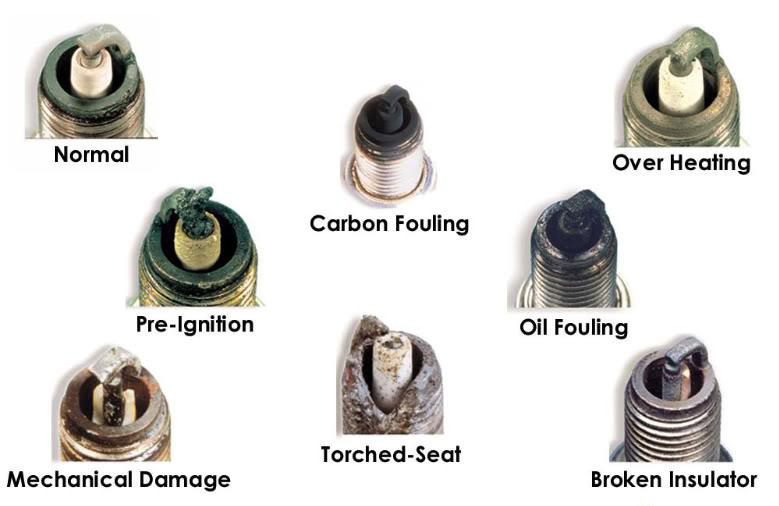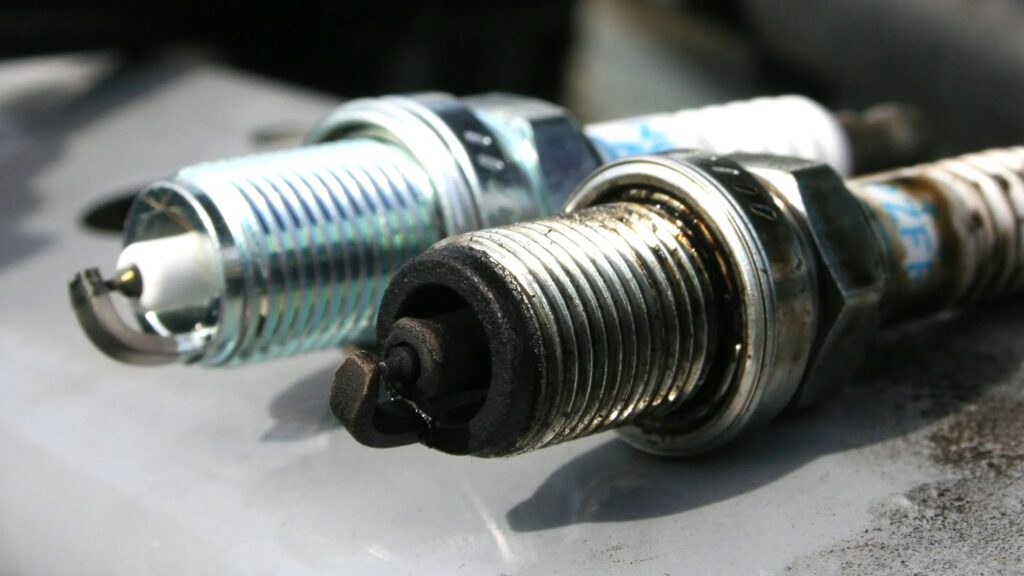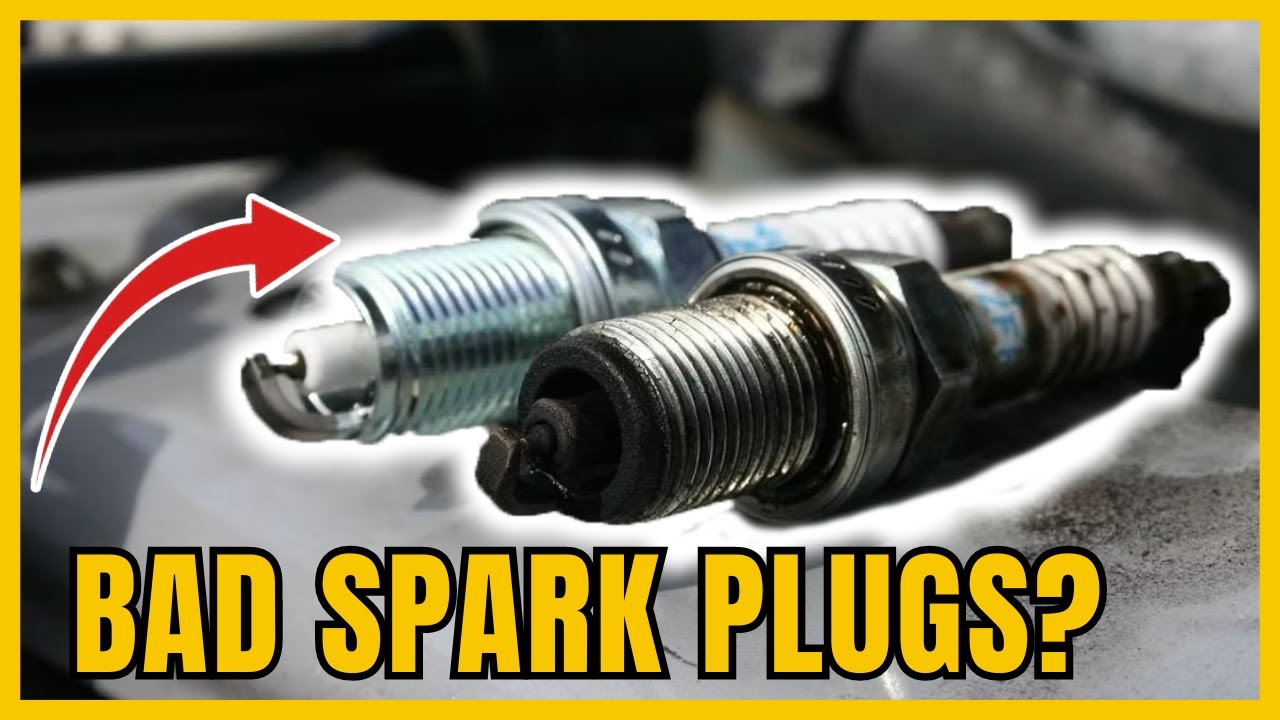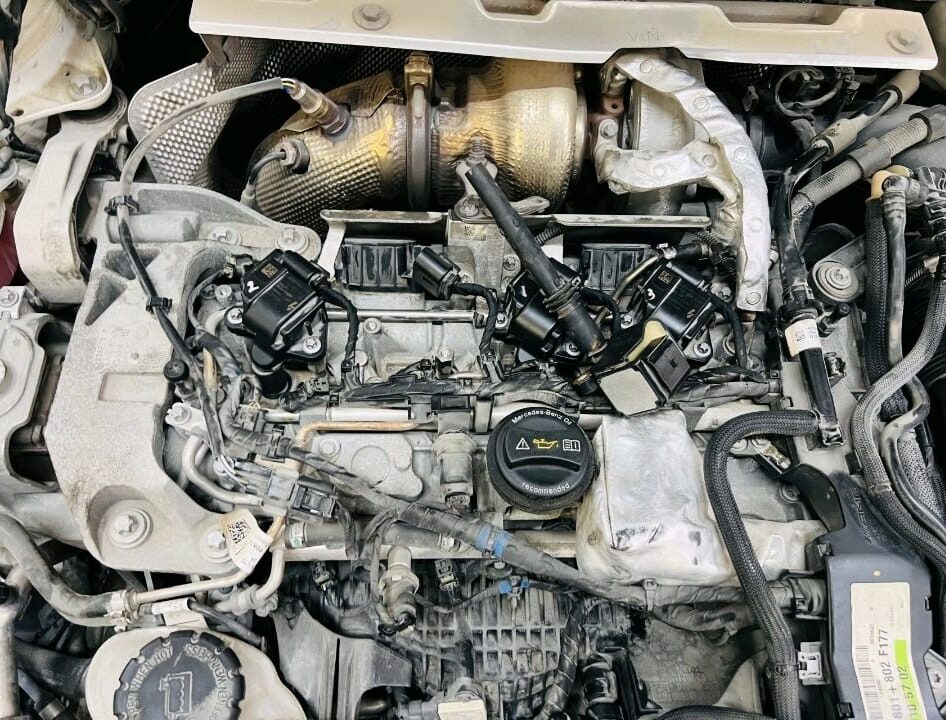Signs of bad spark plugs include engine misfires, rough idling, difficulty starting, reduced acceleration, and increased fuel consumption. If you notice any of these symptoms, it may indicate that the spark plugs are worn or damaged and need to be inspected or replaced.
Spark plugs are important components in the vehicle’s ignition system, playing a crucial role in starting the engine and maintaining smooth operation. Over time, spark plugs can wear out or become fouled, leading to various engine performance issues. Recognizing the signs of bad spark plugs early can save you from costly repairs and ensure the vehicle runs efficiently.
In this guide, we’ll explain the common symptoms of faulty spark plugs and causes behind these issues, and provide tips on how to inspect and replace them.

Contents
Spark Plugs and Their Role
Spark plugs are devices that deliver an electric current from the ignition system to the combustion chamber of an engine. This current ignites the compressed fuel/air mixture, causing combustion, which powers the engine.
A typical spark plug consists of:
- Metal Shell: Grounds the spark plug and provides a sealing surface.
- Insulator: Electrically isolates the central electrode from the metal shell.
- Central Electrode: Conducts the electric current to the spark gap.
- Side Electrode: Completes the circuit by providing a path for the spark.
Over time, spark plugs can degrade due to heat, pressure, and the corrosive nature of combustion gases.
Common Signs of Bad Spark Plugs
Bad spark plugs can lead to a variety of engine performance issues, ranging from poor fuel economy to engine misfires. Recognizing the symptoms early can help prevent more serious damage to your vehicle’s engine.
1. Engine Misfires
An engine misfire occurs when one or more cylinders fail to fire properly, leading to rough running, hesitation, or stumbling. This can be caused by faulty spark plugs that fail to ignite the air-fuel mixture effectively. Read more about Can Spark Plug Wires Cause Misfire?
2. Rough Idling
If your engine shakes or vibrates excessively when idling, it could indicate that the spark plugs are not firing correctly. This uneven firing disrupts the smooth operation of the engine.
3. Difficulty Starting the Engine
Worn or fouled spark plugs can make it hard for your engine to start. If you notice increased cranking time or the engine struggles to turn over, it’s time to inspect the spark plugs.
4. Reduced Acceleration
A noticeable decrease in acceleration power can be a sign of bad spark plugs. If the engine hesitates or lacks responsiveness when you press the accelerator, the spark plugs may not be delivering the necessary spark.
5. Increased Fuel Consumption
Faulty spark plugs can cause incomplete combustion, leading to increased fuel consumption. If you find yourself visiting the gas station more frequently, consider checking the condition of your spark plugs.
6. Poor Engine Performance
Overall sluggishness, stalling, or hesitation during driving can be attributed to bad spark plugs. They can disrupt the timing and efficiency of the combustion process, affecting performance.
7. Check Engine Light
A malfunctioning spark plug can trigger the check engine light. Modern vehicles have sensors that detect irregularities in engine performance, and a misfire due to bad spark plugs can set off this warning.

Causes of Spark Plug Failure
Identifying the reasons behind spark plug failure can help in preventing future issues:
- Wear and Tear: Over time, spark plugs naturally degrade due to the high temperatures and pressures within the engine.
- Carbon Buildup: Short trips and idling can lead to carbon deposits on the spark plugs, affecting their performance.
- Oil Fouling: Leaking oil can coat the spark plugs, leading to fouling and misfires.
- Incorrect Spark Plug Gap: If the gap between the electrodes is too wide or too narrow, it can cause poor engine performance.
- Overheating: Running the engine too hot can damage the spark plugs, causing them to fail prematurely.
How to Inspect Spark Plugs
Inspecting spark plugs is a straightforward process:
- Locate the Spark Plugs: Refer to your vehicle’s manual to find the spark plug locations.
- Remove the Spark Plug Wires: Gently pull off the spark plug wires or coils.
- Use a Spark Plug Socket: Use the appropriate socket to remove the spark plugs.
- Inspect the Condition:
- Normal Wear: Light tan or grayish color indicates normal operation. Here is a guide about Spark Plug Color Diagnosis.
- Carbon Fouling: Black, dry soot suggests carbon buildup.
- Oil Fouling: Oily deposits point to oil leaks.
- Overheating: Blistered or white deposits indicate overheating.
- Check the Gap: Use a feeler gauge to measure the spark plug gap and adjust if necessary.
Replacing Spark Plugs
If inspection reveals that the spark plugs are worn or damaged, replacing them is essential:
- Purchase the Correct Spark Plugs: Consult your vehicle’s manual for the correct specifications.
- Install New Spark Plugs: Carefully install the new spark plugs, ensuring they are properly gapped.
- Reconnect the Spark Plug Wires: Attach the wires or coils securely.
- Test the Engine: Start the engine to ensure smooth operation.
Preventive Maintenance Tips
To extend the life of your spark plugs and maintain engine performance:
- Regular Inspections: Check spark plugs at regular intervals as recommended in your vehicle’s manual.
- Proper Driving Habits: Avoid excessive idling and short trips that can lead to carbon buildup.
- Timely Replacements: Replace spark plugs as per the manufacturer’s recommendations or if performance issues arise.
- Use Quality Fuel: High-quality fuel can reduce the likelihood of fouling and deposits.
Frequently Asked Questions
Here are some FAQs about bad spark plugs symptoms –
1. How often should I replace my spark plugs?
Most manufacturers recommend replacing spark plugs every 30,000 to 100,000 miles, depending on the type of spark plug and driving conditions.
2. Can I clean spark plugs instead of replacing them?
In some cases, spark plugs can be cleaned using a wire brush or spark plug cleaner. However, if they are worn or damaged, replacement is necessary.
3. What happens if I ignore bad spark plugs?
Ignoring bad spark plugs can lead to poor engine performance, increased fuel consumption, and potential engine damage.
4. Can bad spark plugs cause the check engine light to come on?
Yes, faulty spark plugs can trigger the check engine light due to misfires or irregular engine performance.
5. Are there different types of spark plugs?
Yes, spark plugs come in various materials, including copper, platinum, and iridium, each offering different performance and longevity characteristics.
Conclusion
Recognizing the signs of bad spark plugs and addressing them promptly is crucial for maintaining the vehicle’s performance and longevity. Regular inspections and timely replacements can prevent more severe engine issues and ensure a smooth driving experience. If you’re uncertain about the condition of your spark plugs, consult a professional mechanic for assistance.





